Comprehensive Guide to Garden Mulching Services

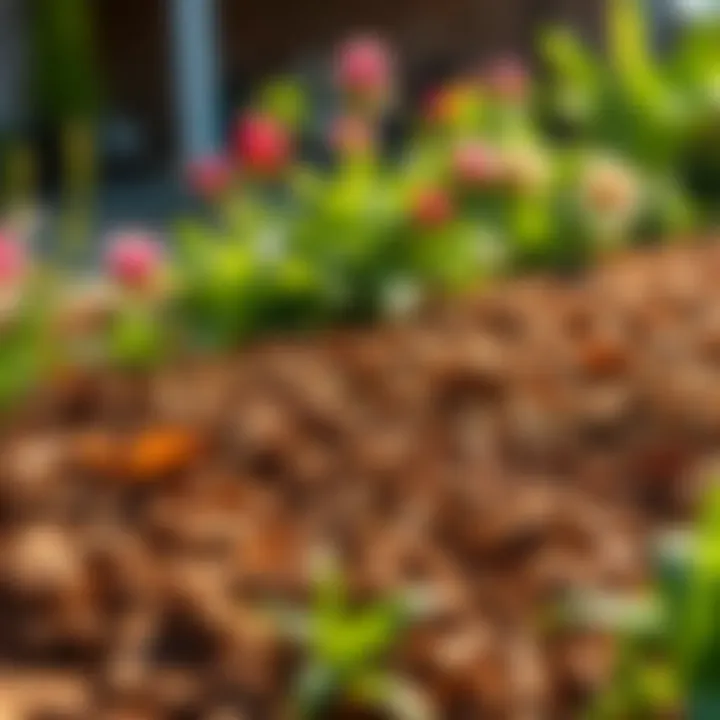
Intro
Garden mulching services are becoming an increasingly popular topic as more people recognize their importance in sustainable gardening. Mulching, while often overlooked, serves as a powerful ally in the quest for healthier soil and robust plant life. This phase of gardening not only improves the aesthetics of the landscape but also provides a range of biological benefits crucial for the ecosystem.
As urban spaces expand and natural habitats decrease, the practice of mulching emerges as a necessary tool for maintaining soil moisture, enhancing soil structure, and even suppressing weeds. Gardeners, both seasoned and novices, can significantly elevate their garden's performance through informed mulching practices. This comprehensive guide is set to unfold the various facets of garden mulching services, from methods and materials to the economic implications for gardeners.
More than just a barrier placed on the soil, mulch encourages biodiversity by fostering a vibrant microclimate for beneficial organisms. This lays ground for plants to thrive while also playing a pivotal role in reducing water runoff and erosion. Whether you're looking for practical ways to enhance your residential garden or seeking effective strategies for larger agricultural undertakings, this guide aims to illuminate the vital connection between mulching practices and sustainable gardening.
Foreword to Garden Mulching
Garden mulching serves as a cornerstone in maintaining healthy and sustainable landscapes. As we delve into the art of mulching, we start to understand not only its immediate benefits but also its long-term advantages. Mulching, in essence, is an age-old practice that helps enrich the soil and improves the overall health of your garden. In this section, we will explore what mulching is, why it matters, and how it has evolved through history—laying the groundwork for a deeper understanding of various mulching materials and their ecological benefits.
Definition and Purpose of Mulching
Mulching refers to the practice of applying a layer of material—organic or inorganic—on the surface of the soil. The primary purpose of this covering is to conserve moisture, regulate soil temperature, suppress weeds, and improve the overall aesthetic of garden spaces. In simpler terms, it acts like a protective blanket for the soil, covering it just as winter snow covers the ground, providing insulation and much-needed nutrients over time.
Benefits of Mulching:
- Moisture Maintenance: It helps retain soil moisture, reducing the need for frequent watering.
- Weed Control: By blocking sunlight, mulches significantly limit weed growth, effectively reducing competition for resources.
- Temperature Regulation: A layer of mulch helps keep the soil temperature consistent, protecting plant roots from extreme conditions.
- Soil Enrichment: As organic mulches decompose, they add essential nutrients back into the soil, fostering a healthy ecosystem for plants.
Mulching isn’t just a gardening chore; it’s an essential practice that creates a thriving environment for plants while reducing the workload for the gardener. It’s a win-win situation.
Historical Perspective of Mulching Techniques
The use of mulch can be traced back to ancient agricultural practices. Civilizations such as the Egyptians and Chinese employed various materials, from straw to animal manure, to protect their crops and improve yields. A historical lens reveals that mulching techniques have always been adapted to fit the regional climates and available resources.
During the Middle Ages in Europe, mulching saw a resurgence as people began to notice its benefits in sustaining the crops amid challenging growing conditions. By integrating organic matter like leaves and kitchen scraps, gardeners created a closed-loop system, improving soil health while reducing waste.
Key Historical Insights:
- Ancient cultures relied on natural materials, like leaves and rocks, for mulching.
- Techniques evolved according to local climates and agricultural advancements.
- The practice has transformed from rudimentary methods to sophisticated mulching strategies, especially in the modern era.
In contemporary gardening, mulching techniques have advanced, with research now guiding mulching practices for optimal results. This evolution highlights how agricultural practices can blend tradition with innovation, making gardening both an art and a science.
In summary, understanding the definition and purpose of mulching, along with its historical context, sets the stage for exploring the myriad materials available today, their ecological benefits, and how one can choose the right mulch for diverse gardening needs.
Types of Mulching Materials
Understanding the different types of mulching materials is essential for anyone who wants to optimize the health and appearance of their garden or landscape. Here, we will explore both organic and inorganic options, each with its own advantages that contribute significantly to the overall gardening success. The choice of material not only affects aesthetic appeal but also impacts soil health, moisture retention, and weed control.
Organic Mulching Options
Organic mulching options include natural materials that break down over time, thus improving soil quality as they decompose. These are not only beneficial for the garden but also contribute to a sustainable, eco-friendly approach.
Wood Chips
Wood chips are a favored choice among gardeners for their long-lasting nature and aesthetic appeal. They provide an effective barrier against weeds and help to retain soil moisture. Their key characteristic is the ability to insulate the soil, regulating temperatures that protect plant roots. While they do require some time to decompose, once broken down, they enrich the soil with essential nutrients. However, it’s important to note that wood chips can sometimes attract termites, so proper placement away from wooden structures is crucial.
Bark Mulch
Bark mulch stands out due to its natural look and durability. Made from shredded tree bark, this type of mulch provides excellent moisture retention while suppressing weeds effectively. Its thick layer can also prevent soil erosion. A unique feature of bark mulch is its slower decomposition rate, meaning it won’t need frequent replacement. That said, it can occasionally create a crusty layer that water struggles to penetrate. Thus, ensuring proper application thickness is vital.
Straw and Hay
Straw and hay serve well as a lightweight organic option that's especially popular among vegetable gardeners. Their key characteristic is their high nitrogen content, which promotes healthy plant growth as they decompose. Straw is especially effective in keeping roots cool while preventing weeds. One downside is that they can harbor seeds of weeds if not sourced correctly, so choosing high-quality, clean straw is important. Hay is often observed to be more useful for temporary cover rather than long-term use, due to its tendency to sprout weeds quickly.
Inorganic Mulching Materials
Inorganic mulching materials include products designed to last longer and provide functional benefits without decaying like organic options. These materials are practical in various gardening scenarios, especially for low-maintenance landscapes or commercial applications.
Plastic Sheeting
Plastic sheeting provides an effective barrier against weeds, serving an important purpose in preventing unwanted growth. Its major benefits include excellent moisture retention and heat retention for soil. However, a key consideration is that it can lead to hydration issues if soil is not monitored closely, as it effectively seals moisture in but can also prevent rain from reaching the plants. Moreover, it creates an environment that limits natural soil organisms from thriving.
Landscape Fabric
Landscape fabric is another option that has gained popularity among landscapers. It serves as a barrier that allows moisture and nutrients to penetrate while blocking sunlight, effectively reducing weed growth. The permeable nature of this fabric makes it suitable for various applications. However, care must be taken with installation, as improper placement can lead to weed growth through the fabric over time.
Rubber Mulch
Rubber mulch is an increasingly common choice for playgrounds and gardens emphasizing durability. Unlike organic materials, rubber mulch does not decompose, therefore requiring less frequent replacement. Its standout feature is its ability to absorb impact, making it ideal for play areas. On the downside, rubber mulch can be costly, and it does not provide the same soil benefits as organic options since it doesn’t break down to improve soil health.
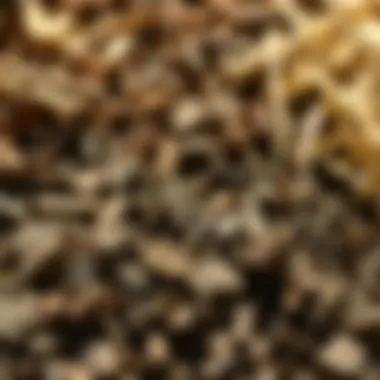
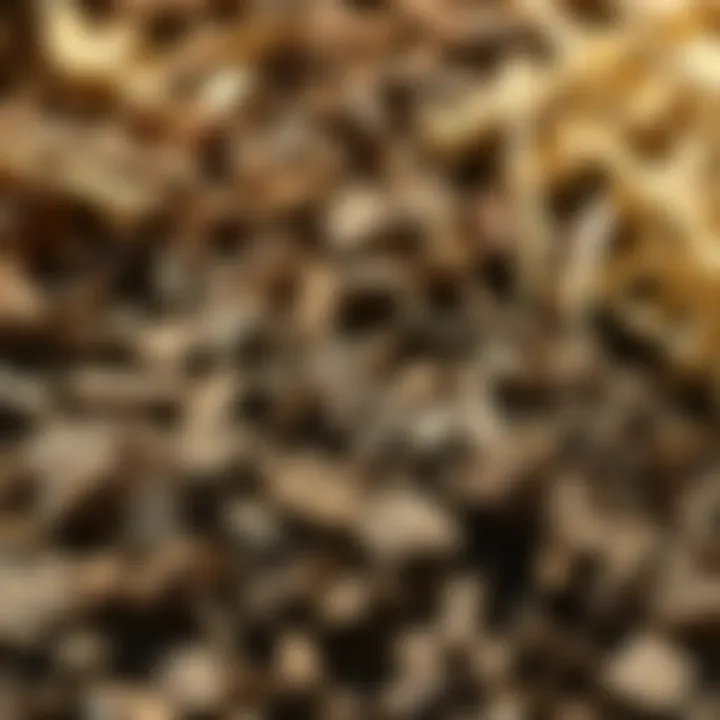
"Using the right type of mulch can transform your garden's health and resilience, benefiting the ecosystem and work you put into it."
For more detailed information about mulching materials, you can visit Wikipedia or explore gardening communities on Reddit.
Ecological Benefits of Mulching
The ecological benefits of mulching extend far beyond mere aesthetics; they play a crucial role in fostering a healthy garden ecosystem. Garden mulching not only contributes to soil vitality but also significantly enhances environmental sustainability. With increased concern over soil and water conservation, understanding the dynamics of mulching can empower gardeners, from hobbyists to professional farmers, to make informed decisions. This segment dives deep into the transformative impacts that mulching can have on various ecological aspects.
Enhanced Soil Retention and Moisture Control
One of the standout advantages of mulching is its ability to improve soil retention and moisture control. When a layer of mulch is applied, it shields the soil from the sun's harsh rays, reducing evaporation rates. This is particularly beneficial in dry regions or during the hotter months when water can become scarce. A well-mulched garden can maintain moisture levels, thus decreasing the need for frequent watering.
- Benefits of Moisture Control:
- Prevents water loss through evaporation.
- Encourages deeper rooting of plants due to available moisture.
- Allows for more efficient use of water resources, reducing bills for irrigation.
"Healthy soil is the backbone of a flourishing garden, and moisture control through mulching plays a crucial role in maintaining that health."
Weed Suppression Mechanisms
Weeds are often considered the bane of many gardeners' lives. In the absence of careful management, they can rapidly outcompete desired plants for nutrients, water, and light. Mulching acts as a formidable barrier against weed growth. By covering the soil, mulch blocks light from reaching weed seeds, inhibiting their germination. This natural form of weed control means less reliance on chemical herbicides, fostering a more organic gardening approach.
- How Mulch Suppresses Weeds:
- Shading inhibits seed germination.
- Thick layers create a physical barrier to seedling emergence.
- Organic mulch gradually decomposes, enriching the soil while smothering weeds.
Temperature Regulation in Soil
Another essential benefit of mulching is its capacity to regulate soil temperature. Plants are sensitive to extreme fluctuations in temperature; too much heat or cold can stress them or hinder growth. A layer of mulch helps insulate the soil, keeping it cooler in the summer and warmer in the winter. This creates a more stable environment for root systems.
- Temperature Benefits:
- Protects roots from extreme temperature changes.
- Reduces heat stress during hot days.
- Helps retain warmth during chilly nights, promoting plant growth.
Habitat for Soil Microorganisms
Healthy soil is teeming with life, and mulching directly contributes to creating a thriving habitat for soil microorganisms. Organic mulch, in particular, breaks down over time, giving microorganisms and beneficial insects a habitat. These tiny allies promote soil health by aiding in nutrient cycling and improving soil structure, effectively enhancing fertility. Moreover, they contribute to pest control by fostering a balanced ecosystem.
- Benefits for Microorganisms:
- Provides organic matter that feeds soil organisms.
- Attracts beneficial insects, which are natural predators of pests.
- Enhances soil structure, allowing for better aeration and drainage.
Economic Aspects of Garden Mulching Services
Mulching is more than just a gardening technique; it’s an investment in the economic health of your gardening space. Understanding the economic aspects of garden mulching services can illuminate not only the immediate costs but also the long-term benefits of integrating mulch into your gardening practices. By analyzing cost considerations and potential savings, one can appreciate how mulching services can ultimately contribute to a more profitable and sustainable approach to gardening.
Cost Considerations in Mulching Services
The costs associated with mulching can vary widely, influenced by factors such as the type of materials used, the size of the area to be mulched, and the complexity of the application process. When hiring a mulching service, one should consider the following elements:
- Material Costs: Organic materials like wood chips and straw can be affordable options, while premium choices like rubber mulch or decorative stones might demand a higher price tag.
- Labor Costs: Professional services include not just material delivery but also the labor for proper installation. While DIY mulching may save money upfront, professional help can ensure that the job is done efficiently and effectively.
- Frequency of Replacement: Some mulches decompose or wash away faster than others. For instance, natural substances tend to need replacement yearly, while rubber or plastic may last significantly longer. This aspect can affect your overall budgeting.
"Investing wisely in mulch now can prevent costly soil problems down the road."
In light of these factors, it’s essential to get a detailed quote from a service provider. Always inquire about what is included in the price and consider the potential for hidden costs that may spring up later.
Long-term Savings through Soil Health
While mulching may seem like an upfront expense, it often leads to significant long-term savings, particularly in terms of soil health. Healthy soil is the backbone of effective gardening and agriculture. Here’s how mulching services contribute to financial savings over time:
- Reduced Water Costs: Mulch helps retain moisture in the soil, reducing the need for frequent watering. Consequently, this can lead to lower water bills, especially during dry seasons.
- Decreased Fertilization Needs: When mulched properly, soil retains nutrients much more effectively. This means less need for chemical fertilizers, which can be quite costly.
- Labor Savings: With proper mulching, weed growth diminishes significantly, cutting down the amount of time and labor spent on weeding tasks, which can be quite a drain on physical resources.
- Increased Crop Yields: Healthier soil translates to better plant growth. For commercial growers, this can mean a more abundant harvest, boosting income.
Investing in mulching services is not just a short-term solution; it’s a proactive step towards securing a flourishing, resilient garden that also aligns with financial sustainability.
For more on sustainable gardening practices, visit Wikipedia or refer to Britannica.
Choosing a Mulching Service Provider
Selecting the right mulching service provider can be as tricky as finding a needle in a haystack. It’s not just about throwing down some material and calling it a day; a quality mulching service plays an essential role in the long-term health of your garden. Trust me, a reputable provider can save you time, money, and a lot of headaches down the road. This section will shed light on the specifics of what to look for when picking a service that’s right for your needs.
Evaluating Credentials and Experience
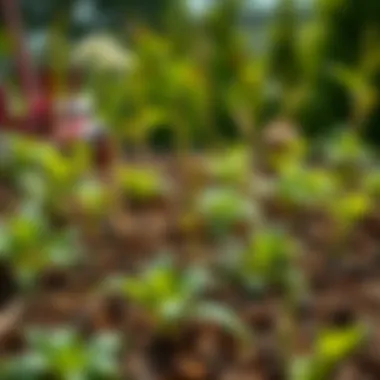
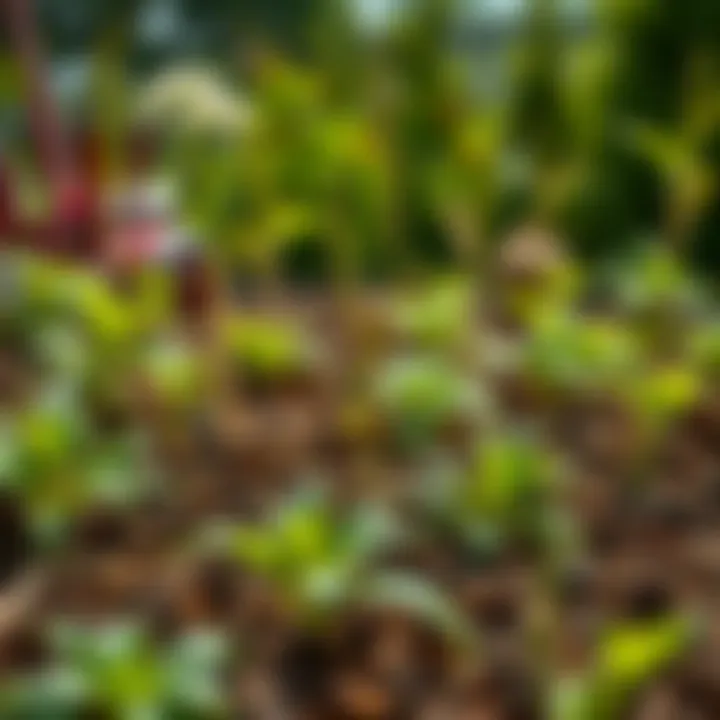
When it comes to hiring mulching services, vetting their credentials is a vital step. The green thumbs in the field usually come with a professional background in horticulture or agriculture. An accredited service not only shows they have taken the time to learn the craft but also ensures that they follow best practices. You wouldn't want a novice treating your plants with hit-or-miss methods.
Here are a few key elements to consider:
- Certifications: Look for works from bodies like the National Association of Landscape Professionals.
- Portfolio: They should have a portfolio showcasing their past projects. A picture paints a thousand words, right?
- Experience Level: A firm that has been around for several years may have weathered various challenges and learned the ropes effectively.
Understanding Service Offerings and Customization
Every garden is unique, and so should be the mulching plan. A one-size-fits-all approach often does more harm than good. Ask potential providers about their services and how they can tailor them to fit your needs. Do you have a vegetable garden? Flower beds? Or perhaps you’re working within a commercial project? Each demands a different mulching strategy.
Here’s what to watch for:
- Types of mulch available: Organic versus inorganic—know their pros and cons based on your garden type.
- Service Scope: Find out if they provide beyond basic mulching. Some may offer planning, installation, and ongoing maintenance.
- Customization Options: Can they adjust their approach based on your garden’s layout and conditions? Custom solutions often yield better results.
Assessing Customer Reviews and Reputation
In today’s digital age, word of mouth has transformed into online reviews, so don’t overlook evaluating your provider’s reputation. Reading through customer testimonials can offer insights that you won’t find in a marketing brochure.
Key tips for assessing reviews include:
- Platforms to consider: Look beyond the provider’s website. Sites like Yelp, Google Reviews, and even community forums on platforms like Reddit can provide unfiltered feedback.
- Check for patterns: A single negative review isn’t an alarm bell, but repetitive complaints regarding the same issue should raise red flags.
- Engagement with customers: How does the provider respond to customer feedback? Active engagement often indicates they value client satisfaction and are willing to address concerns.
Investing time in these considerations will set you on the path toward partnering with a reliable and competent mulching service provider. In the end, a solid choice aids in achieving a thriving garden environment, ensuring that every plant gets the nurturing attention it needs.
"The best mulching service isn’t the one that makes the tallest claims, but the one that delivers results tailored for your garden’s unique needs."
For more information and tips on mulching services, you can visit additional resources here:
By keeping all these factors in mind, you’ll be better equipped to make an informed decision that seeks to enhance both your gardening journey and the health of your soil.
DIY Mulching: When and How
When it comes to gardening, mulching is often considered an essential practice. For those looking to dive into the world of DIY mulching, understanding when and how to implement mulching can be quite beneficial. Not only can this practice enhance the appearance of your garden, but it can also provide numerous ecological advantages. By choosing to mulch on your own, you can customize the approach based on specific garden needs, making it a rewarding undertaking.
Identifying Suitable Projects
Before embarking on any mulching project, it's crucial to assess your garden to find areas that could benefit from this practice. Not all sections of your garden will require mulching. Suitable projects often include:
- Flower Beds: A layer of mulch can help flowers thrive by retaining moisture and suppressing weeds.
- Vegetable Gardens: Mulching in vegetable areas keeps soil temperature stable and supports healthy growth.
- Paths and Walkways: It can create visually appealing pathways while minimizing mud and erosion during rainfall.
- New Plant Areas: If you've just planted saplings or seeds, a protective layer of mulch can provide the necessary conditions for them to flourish.
It's advisable to look for areas that drain poorly or suffer from weed overgrowth, as these spots typically gain the most from mulching.
Selection of Appropriate Material
Choosing the right materials for your DIY mulching project is key to achieving the best results. Different materials come with their unique benefits:
- Organic Options: These can be grass clippings, straw, or wood chips. Organic mulch not only looks great but gradually decomposes, feeding the soil over time.
- Inorganic Materials: Things like rubber mulch or gravel offer durability and require less upkeep. However, they do not improve soil quality as organic materials do.
- Combinations: Sometimes a mix of materials can be ideal. For instance, using wood chips combined with straw can provide the aesthetic appeal while also benefiting soil health.
When selecting materials, consider their availability, how they will enhance your landscape, and their long-term sustainability.
Application Techniques and Best Practices
Executing a mulching project effectively calls for some basic techniques and practices. Here’s how to get it done:
- Preparation: Clear any existing weeds or debris from the area you wish to mulch. It's essential to start with a clean slate for the best results.
- Size Matters: Aim for a mulch layer of around 2 to 4 inches deep. Too little won't effectively suppress weeds, while too much can suffocate plants.
- Keep a Distance: Avoid letting mulch touch the stems of plants, as this can lead to rot. A couple of inches of space should do the trick.
- Watering Post-Mulching: It's often best practice to water your plants right after applying the mulch. This settles the mulch and ensures moisture penetration.
- Regular Maintenance: Over time, mulch can break down or wash away. Periodically reassess and add more as needed to maintain its effectiveness.
Engaging in DIY mulching begins with understanding the right projects, selecting suitable materials, and applying them with care and consideration. Through this approach, not only will your garden thrive, but you'll also gain a sense of accomplishment in tending to your outdoor space.
"DIY mulching is a journey where the more you do it, the more you learn about your garden's needs and how to meet them."
For more comprehensive guidelines on mulching techniques and materials, you may also explore resources from Wikipedia or consult gardening experts at Britannica.
Case Studies: Successful Mulching Projects
The world of garden mulching is not just filled with jargon and technical know-how; it also thrives on real-world examples that signify its practical applications. The importance of case studies in our exploration of mulching services can't be overstated. They serve as a bridge between theory and practice, showcasing how effective mulching can alter landscapes and improve gardening outcomes. In this section, we’ll delve into specific projects that exemplify successful mulching practices across diverse settings.
Urban Gardens
Urban gardens often grapple with unique challenges like limited space and poor soil quality. To combat these hurdles, a community garden in downtown Chicago implemented a mulch plan using organic materials. This initiative not only enhanced the soil structure but also kept weeds at bay.

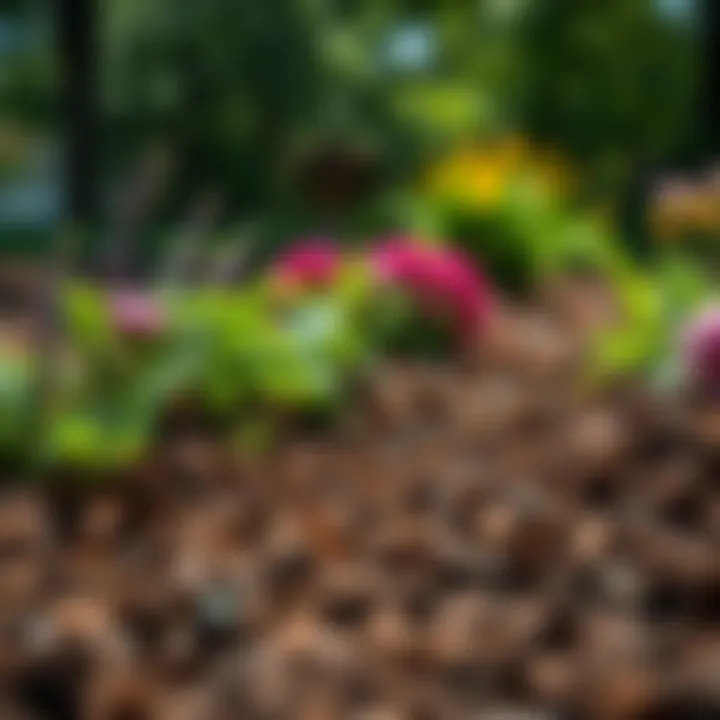
Reflecting on their journey, the garden coordinator mentioned, "By utilizing wood chips as mulch, we improved our soil’s organic content over time." The residents noticed the difference as plants thrived, drew pollinators, and attracted a healthy ecosystem. Some locals even began using the knowledge garnered through this project in their own private gardens, thus spreading its positive influence.
The use of organic materials—an approach popular in urban settings—creates a fertile ground for local biodiversity, which is crucial for environmental health.
The project also illuminated the significance of community involvement in maintenance. This collaboration encouraged residents to engage with their surroundings, crafting a sense of pride while nurturing their urban ecosystem.
Community Gardens
Community gardens present a microcosm of wider agricultural challenges. A notable case is a garden in Portland, Oregon, where volunteers adopted the practice of mulching with straw and leaves. This effort was geared towards promoting sustainability and resilience among community members.
The benefits became apparent when garden yield increased significantly over a season. Participants reported that plants required less frequent watering and the soil remained warmer during cooler months.
Furthermore, this practice fostered a deeper connection to the food they cultivated. Many participants expressed how understanding mulching techniques helped them appreciate the science behind their crops. By integrating these practices, they paved a vital path towards food security.
Commercial Landscaping
On the commercial front, a landscaping company in San Diego undertook a project at a local park. Here, they employed rubber mulch in high-traffic areas to minimize erosion and deter weeds. While this material is not organic, it showcased the versatility of mulching options, catering to specific environmental needs.
The results were remarkable. Over the course of two years, maintenance costs decreased as rubber mulch created a long-lasting barrier against the elements. The park’s appearance improved significantly, inviting community members to enjoy the space without worrying about muddy patches or excessive growth.
Through such projects, we see how choosing the right mulch is not merely about aesthetics, but also about long-term sustainability and cost-effectiveness.
In reflection, these case studies enrich our understanding of garden mulching by highlighting the tangible benefits it brings to different settings. By drawing upon real-life examples, gardeners and landscapers can glean insights that might transform their own practices, no matter the scale of their projects.
For further information on local community gardens and sustainable practices, you can check resources like USDA's community gardening resources or local gardening nonprofit organizations.
In essence, successful mulching projects illustrate that thoughtful application and community involvement yield not only bountiful harvests but also stronger, more resilient ecosystems.
Challenges in Mulching Practice
Garden mulching is widely known for its numerous benefits, but it also comes with a set of challenges that should not be overlooked. Understanding these challenges is crucial, especially for those like farmers and gardening enthusiasts who rely on effective mulching as part of their sustainable practices. Here, we will address some of the most pressing challenges, along with their implications for successful mulching initiatives.
Common Misconceptions About Mulching
Many misconceptions surround garden mulching, and these can lead to ineffective practices or misguided choices. One common myth is that all mulches create a barrier against weeds. While it’s true that mulching can significantly suppress weed growth, it should be noted that not all materials are equally effective. For example, a light layer of straw may not provide enough coverage compared to heavier materials like wood chips or bark mulch.
Another misconception is that once mulch is applied, no further maintenance is needed. This can lead to problems as over time, mulches break down or get washed away. Regular checks are essential to maintain effective mulching, as failing to do so can result in exposed soil, increased weed growth, or even phoneity from pests.
Important note:
Regular monitoring and timely replenishment of mulch not only help in weed suppression but also in sustaining moisture levels in the soil.
Issues with Mulching Material Degradation
Degradation of mulching material over time is a major issue, and it can affect the overall efficiency of mulching strategies. Organic materials such as grass clippings, straw, and leaves are prone to decomposition. While this is a beneficial process in the long term because it enriches the soil, it can lead to issues if not managed properly. If mulch decomposes too quickly or unevenly, it may necessitate more frequent applications, which can become costly over time.
On the flip side, inorganic materials like plastic or rubber tend to last much longer. However, they can create their own set of problems, such as limiting water and air exchange with the soil. Furthermore, they may not contribute substantially to soil health, as organic mulches do.
Considerations:
- Regularly assess organic mulch for signs of degradation.
- Replenish mulch when necessary to maintain thickness and effectiveness.
- Consider the trade-off between organic and inorganic mulches based on your specific gardening objectives.
In summary, while garden mulching has distinct advantages, it is essential to navigate these challenges with awareness and diligence. By staying informed about common misconceptions and the realities of material degradation, farmers and gardening enthusiasts can make wiser decisions that ultimately lead to more effective mulching practices.
Future Trends in Mulching Services
As we continue to move into a world that increasingly values sustainability, the trends in garden mulching services have started to shift drastically. Understanding these emerging trends in mulching is not just beneficial for keeping up with the industry; it's essential for anyone invested in agriculture or the beauty of landscaping. Not only do future trends help improve soil health, but they also speak volumes about how we choose to interact with our environment.
Innovative Mulching Materials
When it comes to mulching, the materials used can make or break the success of the technique. Nowadays, alternatives to traditional options are gaining traction. For instance, consider using recycled materials such as post-consumer plastics for mulch. This option not only helps reduce plastic waste but also lasts longer than organic varieties. Another exciting avenue is biochar, a substance made from organic material that has been heated in a low-oxygen environment. It enhances soil fertility and retains moisture effectively.
Moreover, coconut coir is becoming a popular choice. It's lightweight, has excellent moisture retention capabilities, and breaks down at a slower pace than other organic mulches, providing long-term benefits. A noteworthy mention is living mulches, which involve planting cover crops between rows of plants. This technique naturally suppresses weeds, improves soil structure, and promotes biodiversity.
Innovative materials are paving the way for not just sustainability but resilience in the face of climate change.
Being informed about these materials and their long-term impact is no longer optional; it’s crucial for anyone looking to sustain good farming practices.
Integration of Technology in Mulching Techniques
Technology is not just for modernizing machinery or optimizing irrigation. Its integration in mulching practices is improving efficiency and outcomes profoundly. The use of drones for aerial distribution of mulch is becoming more common. This method allows for faster application, especially in large agricultural areas or community gardens. Besides, drones can help monitor crop health, giving farmers a better understanding of where to apply mulch for optimal benefits.
Furthermore, soil sensors that measure moisture levels are gaining ground. These devices guide farmers on when to apply mulch, ensuring that it’s done at the right time for maximum efficacy. Pairing mulching materials with data gathered from these sensors can elevate soil management practices significantly.
On the software side, platforms that utilize machine learning are being developed to assess which mulching strategies yield the best results based on historical data. This moves the industry towards a more data-driven approach, fostering improved decision-making.
In summary, the future of mulching services is not just about what goes on the ground but also how technology can enhance its application and impact. It’s a blending of old-school gardening wisdom with cutting-edge technology that holds great promise for effective and sustainable practices in agriculture.



